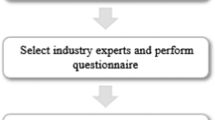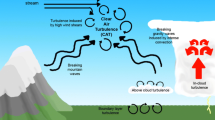Abstract
Aircraft is a socio-technical system with some unavoidable accidents due to its complexity. Although Boeing 737 Aircraft was the best-selling commercial airliner, a relatively new variant, Max 8, suffered two rapidly successive mishaps, serving as a motivation for this study. The propensity of 737 to accidents considering some predictors, is, therefore, objectified. Specifically, it examined accidents involving 737 Aircraft variants from 1970 to 2021. Cox proportional hazards regression model and Weibull distribution model were considered but Gompertz distribution models, with the best goodness-of-fit for the data, were applied to estimate Aircraft survival functions and hazard ratios, with interactions per airline, causes of accidents, and fatality rates. The study showed that the survivability of 737–100 outperformed all the other series, while Max 8 had a high hazard ratio when interacting with the airline operator factor, i.e., management or ownership. Reparameterization of Aircraft–predictor interactions show different significance levels in that airline management or ownerships contribute a long way to accidents. The high cost of Aircraft maintenance is a strong determinant of accidents. The reparameterized results further show that pilot errors significantly contribute to accidents. This investigation suggests that although two Max 8 failed with a 100% fatality rate, 737 was generally safe. The study concludes that the trend toward intuitive and accurate components diagnostics beyond the prognostic and health management approach should be invigorated. In addition, despite the rigorous certification process embarked upon by the FAA, it is suggested that intuitive human reliability analysis regarding the human–machine team, such as flight crews and pilots, and the human failure events be further entrenched in quantifying failure events.



Similar content being viewed by others
Abbreviations
- AIC:
-
Akaike information criterion
- AOA:
-
Angle of attack
- ASN:
-
Aviation safety network
- COA:
-
Causes of accident
- HF:
-
Hazard function
- HR:
-
Hazard ratio
- MCAS:
-
Maneuvering characteristics augmentation system
- SF:
-
Survival function
- TTA:
-
Time to accident
- VIF:
-
Variance inflation factor
References
Perrow C (1999) Normal accidents: living with high-risk technologies. Princeton University Press, Princeton
Sammarco JJ (2005) Operationalizing normal accident theory for safety-related computer systems. Saf Sci 43(9):697–714
Paglioni VP, Groth KM (2022) Dependency definitions for quantitative human reliability analysis. Reliab Eng Syst Saf 108274:1–12
Gawron V (2019) Automation in aviation—accident analyses. Mitre Technical Report. MTR190013. Center for Advanced Aviation System Development
Haavik TK (2021) Debates and politics in safety science. Reliab Eng Syst Saf 210(107547):1–7
ASN: Aviation Safety Network (2021) ASN aviation safety database. Aviation-safety.net at https://aviation-safety.net/database/. Accessed 27 Oct 2021
Boeing (2020) 737 Commercial transport. Historical snapshot. Boeing.com at https://www.boeing.com/history/products/737-classic.page. Accessed 31 Oct 2021
Hayward J ((2021)) The first operator of each Boeing 737 type. Simpleflying.com at https://simpleflying.com/boeing-737-first-airlines/. Accessed 30 Dec 2021
B737 ((2021)) History, development, and variants of the Boeing 737. B737 at http://www.b737.org.uk/history.htm. Accessed 30 Dec 2021
Johnston P, Harris R (2019) The Boeing 737 MAX Saga: lessons for software organizations. SQP 21(3):4–12. https://asq.org/quality-resources/articles/the-boeing-737-max-saga-lessons-for-software-organizations?id=489c93e1417945b8b9ecda7e3f937f5d. Accessed 27 Dec 2021
German K (2021) 2 years after being grounded, the Boeing 737 Max is flying again. CNET at https://www.cnet.com/news/boeing-737-max-8-all-about-the-Aircraft-flight-ban-and-investigations/. Accessed 27 Dec 2021
Smith JB (2020) Failure time analysis applied to Boeing 737 MAX. In: Proceedings of the annual symposium on reliability and maintainability (RAMS). https://ieeexplore.ieee.org/xpl/conhome/9146480/proceeding. Accessed 27 Dec 2021
Smith JB (2021) Boeing 737 MAX through DC6 fleet grounding decisions revisited with event interval probability analysis. In: Proceedings of the annual symposium on reliability and maintainability (RAMS). https://doi.org/10.1109/RAMS48097.2021.9605749
Dickman P, Weibull C (2019) Interpretation of interaction effects. Pauldickman.com https://www.pauldickman.com/software/stata/parameterising-interactions/. Accessed 7 Nov 2021
Singh S (2020) How many Boeing 737 variants are there? Simplyflying.com at https://simpleflying.com/boeing-737-variants/. Accessed 31 Oct 2021
ARA: Applied Regression Analysis (2018) Lesson 10.7—detecting multi-collinearity using variance inflation factors. PSU.edu at https://online.stat.psu.edu/stat462/node/180/. Accessed 2 Nov 2021
Miles J (2005) Tolerance and variance inflation factor. In: Everitt BS, Howell DC (eds) Encyclopedia of Statistics in Behavioral Science. John Wiley & Sons, Ltd., Chichester
Thompson CG, Kim RS, Aloe AM, Becker BJ (2017) Extracting the variance inflation factor and other multicollinearity diagnostics from typical regression results. Basic Appl Soc Psychol 39(2):1–10
Faiyetole AA (2022) Covid-19 stimulated travel behavior policy framework with evidence from travel change in Southwestern Nigeria. Trans Transp Sci 13(3):1–13. https://doi.org/10.5507/tots.2022.018
O’brien RM (2007) A caution regarding rules of thumb for variance inflation factors. Qual Quant 4:673–690
Cox DR, Oakes D (1984) Analysis of survival data. In: Cox DR, Hinkley DV, Reid N, Rubin DB, Silverman BW (eds) Monographs on statistics and applied probability. Chapman and Hall/CRC, New York
Hosmer DW, Lemeshow S (1999) Applied survival analysis: regression modelling of time to event data. Wiley, New York
Cox DR (1980) Local ancillarity. Biometrika 67:279–286
Sullivan L (2016) Cox proportional hazard regression analysis. Bu.edu on https://sphweb.bumc.bu.edu/otlt/mph-modules/bs/bs704_survival/BS704_Survival6.html. Accessed 5 Nov 2021
Borovkova S (2002) Analysis of survival data. Nieuw Archief voor Wiskunde 5/3(4):110–115
Barndorff-Nielsen O (1980) Conditionality resolutions. Biometrika 67:293–310
Barndorff-Nielsen O (1983) On a formula for the distribution of the maximum likelihood estimator. Biometrika 70:343–365
Barndorff-Nielsen O, Cox DR (1984) Bartlett adjustments to the likelihood ratio statistic and the distribution of the maximum likelihood estimator. J R Stat Soc Ser B 46(3):483–495
Zhao Z, Liang B, Wang X, Lu W (2017) Remaining useful life prediction of Aircraft engine based on degradation pattern learning. Reliab Eng Syst Saf 164:74–83
Li J, Bian S, Zeng A, Wang C, Pang B, Liu W, Lu C (2021) Human pose regression with residual Log-likelihood estimation. http://openaccess.thecvf.com/content/ICCV2021/html/Li_Human_Pose_Regression_With_Residual_Log-Likelihood_Estimation_ICCV_2021_paper.html. Accessed 27 Apr 2022
Liu L, Meng Y, Wu X, Ying Z, Zheng T (2022) Log-rank-type tests for equality of distributions in high-dimensional spaces. J Comput Graph Stat. https://doi.org/10.1080/10618600.2022.2051530
Bland JM, Altman DG (2004) The logrank test. BMJ 328:1073
Bland JM, Altman DG (1998) Survival probabilities. The Kaplan–Meier method. BMJ 317:1572
Goel MK, Khanna P, Kishore J (2010) Understanding survival analysis: Kaplan–Meier estimate. Int J Ayurveda Res 1(4):274–278
Roback P, Legler J (2021) Beyond least squares: using likelihood. In: Roback P, Legler J (eds) Beyond multiple linear regression: applied generalized linear models and multilevel models in R. Chapman and Hall/CRC Press, New York. https://doi.org/10.1201/9780429066665
Profillidis VA, Botzoris GN (2019) Trend projection and time series methods. In: Modeling of transport demand, pp 225–270. https://doi.org/10.1016/b978-0-12-811513-8.00006-6
Mohammed U (2014) Comparison of Cox, Weibull and Gompertz regression models in survival analysis using breast cancer data. MSc. in Statistics thesis submitted to Ahmadu Bellow University, Zaria
Juckett DA, Rosenberg B (1993) Comparison of the Gompertz and Weibull functions as descriptors for human mortality distributions and their intersections. Mech Ageing Dev 69:1–31
KNKT (2019) Investigation. KNKT at http://knkt.dephub.go.id/knkt/ntsc_home/ntsc.htm. Accessed 27 Dec 2021
Morais C, Yung K, Patelli E (2019) Machine-learning tool for human factors evaluation-application to lion air Boeing 737-8 max accident. In: Papadrakakis M, Papadopoulos V, Stefanou G (eds) Proceedings of the 3rd International Conference on Uncertainty Quantification in Computational Sciences and Engineering, UNCECOMP 2019. National Technical University of Athens, GRC, pp. 498–508. ISBN 9786188284494. https://doi.org/10.7712/120219.6355.18709
Keane S, German K (2019) Report on 737 Max 8 crash blames Boeing design, Lion Air staff. CNET at https://www.cnet.com/news/investigators-report-on-737-max-crash-blames-boeing-design-lion-air-staff/. Accessed 27 Dec 2021
KNKT (2018) Preliminary KNKT.18.10.35.04. Aircraft accident investigation report. KNKT at chrome-extension://efaidnbmnnnibpcajpcglclefindmkaj/viewer.html?pdfurl=http%3A%2F%2Fknkt.dephub.go.id%2Fknkt%2Fntsc_aviation%2Fbaru%2Fpre%2F2018%2F2018%2520-%2520035%2520-%2520PK-LQP%2520Preliminary%2520Report.pdf&clen=13425684&chunk=true. Accessed 28 Dec 2021
Boeing ((2021)) Boeing 737 Max software update. Boeing at https://www.boeing.com/commercial/737max/737-max-software-updates.page. Accessed 27 Dec 2021
Taddonio P (2021) In 737 Max crashes, Boeing pointed to pilot error—despite a fatal design flaw. PBS at https://www.pbs.org/wgbh/frontline/article/video-clip-boeing-737-max-crashes-fatal-design-flaw-documentary/. Accessed 28 Dec 2021
Lee J, Mitici M (2020) An integrated assessment of safety and efficiency of Aircraft maintenance strategies using agent-based modelling and stochastic Petri nets. Reliab Eng Syst Saf 202(107052):1–16
Markou C, Cros G (2021) Airline maintenance cost executive commentary FY2021 data. Maintenance Cost Technical Group. IATA. https://www.iata.org/contentassets/bf8ca67c8bcd4358b3d004b0d6d0916f/fy2021-mctgreport_public.pdf. Accessed 27 Mar 2022
de Pater I, Reijns A, Mitici M (2022) Alarm-based predictive maintenance scheduling for Aircraft engines with imperfect Remaining Useful Life prognostics. Reliab Eng Syst Saf 221(108341):1–11
Meissner R, Rahn A, Wicke K (2021) Developing prescriptive maintenance strategies in the aviation industry based on a discrete-event simulation framework for post-prognostics decision making. Reliab Eng Syst Saf 214(107812):1–17
Costa N, Sanchez L (2022) Variational encoding approach for interpretable assessment of remaining useful life estimation. Reliab Eng Syst Saf 222(108353):1–12
Azadeh A, Asadzadeh S, Salehi N, Firoozi M (2015) Condition-based maintenance effectiveness for series–parallel power generation system—a combined Markovian simulation model. Reliab Eng Syst Saf 142:357–368
Faiyetole AA, Sivowaku JT (2021) The effects of aircraft noise on psychosocial health. J Transp Health 22:101230. https://doi.org/10.1016/j.jth.2021.101230
Faiyetole AA (2022) Impact of Covid-19 on Willingness to Share Trips. Transp Res Interdisc Perspect VSI: Covid-19 Part II. https://doi.org/10.1016/j.trip.2022.100544
Patriarca R, Ramos M, Paltrinieri N, Massaiu S, Costantino F, Di Gravio G, Boring RL (2020) Human reliability analysis: exploring the intellectual structure of a research Field. Reliab Eng Syst Saf 203(107102):1–27
Airbus (2021) The number of accidents today is significantly lower than a comparable year more than 20 years ago. Airbus.com at https://accidentstats.airbus.com/statistics/fatal-accidents. Accessed 30 Dec 2021
NSC (2021) Death BY transportation mode. NSC.org https://injuryfacts.nsc.org/home-and-community/safety-topics/deaths-by-transportation-mode/. Accessed 31 Dec 2021
Acknowledgments
The author would like to thank the reviewers for their suggestions, which have greatly improved the quality of the paper. The work is dedicated to Professor Pius Adebola Adesanmi, a Nigerian-born Canadian scholar and all 346 onboard souls lost in the ill-fated Boeing 737 Max 8 Lion Air Flight 610 (LNI610) and Ethiopian Airlines Flight 302 (ETH302).
Funding
The author declares that there are no funds or grants of any sort received during the preparation of this manuscript.
Author information
Authors and Affiliations
Corresponding author
Ethics declarations
Conflict of interest
Not applicable.
Electronic supplementary material
Below is the link to the electronic supplementary material.
Rights and permissions
Springer Nature or its licensor (e.g. a society or other partner) holds exclusive rights to this article under a publishing agreement with the author(s) or other rightsholder(s); author self-archiving of the accepted manuscript version of this article is solely governed by the terms of such publishing agreement and applicable law.
About this article
Cite this article
Faiyetole, A.A. Accident propensity assessment of Boeing 737 Aircraft variants using the Gompertz distribution model. AS 6, 259–283 (2023). https://doi.org/10.1007/s42401-023-00202-z
Received:
Revised:
Accepted:
Published:
Issue Date:
DOI: https://doi.org/10.1007/s42401-023-00202-z




